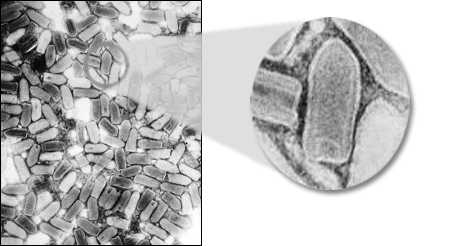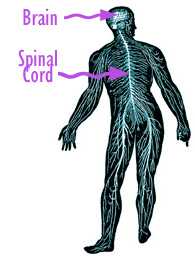The Rabies Virus

Rabies is caused by a virus. A virus is a very tiny germ. You can only see that germ if you have a special microscope. Here´s a picture of the rabies virus:

What does a virus do?
Scientists have discovered more than 300 viruses in animals. Some won´t hurt you. Others cause disease. The common cold and measles are caused by viruses. So are the flu, chickenpox, and AIDS.
How does a virus grow?
Viruses cannot eat food or grow on their own, but they can make more of themselves if they live inside the cells of other organisms, called "hosts".
The viruses attack those host cells and make more of themselves. Then the viruses move on to other host cells and do it all over again.
How does the rabies virus make someone sick?

The rabies virus wants to make its home in a nerve cell, the smallest part of our central nervous system. The central nervous system is made up of our brain and spinal cord and all the other parts of our bodies that control everything we do from breathing to walking.
When there´s a bite from an animal with rabies, the virus attaches to a healthy nerve cell. Then the virus multiplies, making a lot more viruses like itself. Those viruses move on and attach to other nerve cells until eventually they get to the brain. There the virus can cause the brain to swell, and the person with rabies may go into a coma and die.


